Best Time To See The Serengeti Migration
There is no set route or schedule for the Serengeti Wildebeest Migration. It moves crazily based on the weather, the amount of rain, the conditions for grazing, and its inherent impulses.
The herds advance fast at times, yet at other times they stop, split off, or go back. That's what makes it unique and hard to predict. So, the Best Time to see the Serengeti Migration depends on what you want to see, including calving, river crossings, or predator activity.
We at African Scenic Safaris know the land and its patterns well enough to assist you in making smart decisions. With our custom-made Tanzania safari packages, we'll show you where the most action is likely to happen, in a natural way and away from the masses.
So, When Exactly Does The Serengeti Migration Happen?
The Serengeti Wildebeest Migration doesn't happen on a set schedule. It happens all the time because of rain and the need to survive.
Wildebeest are continually on the go, but there are certain times when they move in a more spectacular style that makes it simpler to follow them. That's why having a little understanding of the time is important.
- The herds pursue fresh pasture and water in a big circle through Serengeti National Park and into Kenya's Maasai Mara. But their location changes every month.
- You might see river crossings between June and August or the birth of half a million calves between January and March. The migration looks different in each season.
- No safari operator can give you exact dates because nature doesn't follow schedules. Still, patterns do show up every year. To have the best time on your Tanzania Safari Tour, you should schedule your trip around these patterns.
Hence, the Best Time to visit Tanzania for the migration depends on what you want to witness, like calving, crossings, or predator activity. We've made a map of the regular flow of the migration by season so you can plan clearly.
The best time to see the Serengeti Migration is July to October, when over 1.5 million wildebeest gather in one group and cross rivers, creating Africa’s most dramatic wildlife spectacle.
January To March – Calving Season In Ndutu
This is the beginning of the year and one of the most exciting parts of the Serengeti Wildebeest Migration.
The herds come together in the Ndutu plains of theNgorongoro Conservation Areaduring these months because of the short rains and lush grass.
It's the best time of year for calving, and it's a popular time for people who want to see wildlife births and predator activity on Tanzania Safari Tours.
What to expect:
- By the middle of January, almost 8,000 wildebeest calves are born every day.
- Lions, cheetahs, and hyenas are common predators that hunt near the herds.
- The long rains start in late March, and the herds steadily travel north.
- This is a terrific season for wildlife photography since the landscapes are open and the vistas are striking.
If you want to watch birth, life, and survival all in one spot, this is one of the best times to see the Serengeti migration.
April To June- On The Move Towards The Grumeti
At this time, the Serengeti Wildebeest Migration starts to move throughout the central and western plains from April to June.
April is the start of the long rains, and the herds split out into smaller groups, each looking for greener pastures. In May, they start to move north towards the Grumeti River. Long lines of wildebeest may stretch for kilometres across the plains.
This time is less certain, but for those who do get to see the action, it may be very exciting and rewarding.
What to Expect
- The lengthy rains in April spread the animals out over a larger territory.
- The migration starts to move progressively towards the western Serengeti by May.
- The rutting season starts in June, when male wildebeest compete to get mates.
- Herds are gathering near the Grumeti River to get ready for the first big crossing.
This is a perfect time for people who want to tour quieter places and witness animals wander around in their natural state on their Tanzania Safari Tour.
July To August – The Drama Of The River Crossings
The Mara River crossings are the most famous part of the Great Wildebeest Migration. They happen in July and August. When the herds get to the northern Serengeti, they gather in large groups along the riverbanks and wait to cross. It's one of the most exciting things to see in nature. This is the time of year when survival is put to the test, and the air is full of panic. The water is fast, and there are big crocodiles below.
Things you should know:
- From early July, the herds began to assemble along the Mara River, where they often line up in large lines.
- Thousands of wildebeest jump into the water, where crocodiles wait quietly below the surface.
- Crossings don't happen all at once; herds may cross, go back, then cross again over several days.
- You can't always tell when a crossing will happen, so you might have to wait and see.
- Most of the remaining herds are grazing in Kenya's Maasai Mara at the end of August.
If you want high-stakes action, drama, and a front-row ticket to one of nature's rawest performances, this is the finest time for the Serengeti migration.
Go on a Tailor-Made Safari In Tanzania with African Scenic Safaris that is based on the movement of the migration. With our Serengeti Wildebeest Migration package, you'll be right in the middle of the action with expert guides, flexible itineraries, and carefully chosen camps near the crossing spots.
September To October – Slower Pace, Steady Sightings
The herds slow down during these months as they use up the last of the grazing land. It's easier to see animals in dry areas because predators stay close to water sources. This is a fantastic time for travellers who like a more laid-back safari vibe.
Things to know
- In the Lamai and northern Serengeti regions, you can see smaller herds.
- Some wildebeest stay in the Maasai Mara, while others stay near the border.
- Waterholes become the main gathering spots for both grazers and predators.
- Wildlife sightings are steady, and the landscapes are dry but clear.
- Short rains in late October cause the animals to move south through the Lobo area.
- This shift marks the return journey towards the southern plains for the calving season.
If you're wondering When To Visit Serengeti For Migration without the crowds, this is a quiet and rewarding time to go with our well-planned Serengeti Safari Packages.

Travel Light, Travel Right!
January – December 2026
African Scenic Safaris
Adventure
Travel Style
Wildlife Safari, Cultural Encounters, Luxury Lodges / Tented Camps
Tour Starts
Arusha , Tanzania
Tour Ends
Arusha, Tanzania
Price On Request
Incl Transportations & Accommodations

Travel Light, Travel Right!
January – December 2026
African Scenic Safaris
Adventure
Travel Style
Romantic Safari, Scenic Bush & Beach Retreats, Luxury Lodges / Tented Suites
Tour Starts
Arusha , Tanzania
Tour Ends
Arusha, Tanzania
Price On Request
Incl Transportations & Accommodations

Travel Light, Travel Right!
January – December 2026
African Scenic Safaris
Adventure
Travel Style
Classic Wildlife Safari, Cultural Encounters & Comfortable Lodges
Tour Starts
Arusha , Tanzania
Tour Ends
Arusha , Tanzania
Price On Request
Incl Transportations & Accommodations
01
/ 03
November To December – Rain, Grass, And Southward Travel
The Serengeti's barren grasslands start to turn green again when the short rains come again. This makes the wildebeest migration move south, with herds steadily heading towards the short-grass plains. It is the start of the last part of the cycle, which goes straight into calving season.
Important things to remember
- The short rains start in November and make the central and southern Serengeti feel better.
- Wildebeest start to move south from the northern areas towards Seronera and beyond.
- The migration occurs quickly, and you can often see it in huge lines across open plains.
- Herds start to break out into groups with a scattered pattern of movement.
- Some herds get to Ndutu in the Ngorongoro Conservation Area by the middle of December.
This change means that the month-long cycle of the Serengeti migration has restarted. It is an excellent time for people who want to arrange Tanzania Safari Packages that emphasise travelling during off-peak times and getting to the Serengeti Wildebeest Migration calving season landscapes early.
The Wild Way To Time The Migration!
We told you what the Best Time to see the Serengeti migration is and how the herds roam across Tanzania all year long.
You now know when and where to go based on what you want to see: calving, crossings, or peaceful grazing scenes.
Of course, only experienced guides on the ground can follow the herds in real time. That's where we come in.
Every step our staff at African Scenic Safaris takes is in time with the rhythm of nature. Our Serengeti Safari Packages, which are led by experts, will let you see everything.
Follow the Rhythm of Nature
The Serengeti Migration moves with the seasons, not schedules. Time your safari by instinct, not the calendar. Let nature lead, and we’ll guide the way.
Travel to Tanzania with Confidence & Excitement!
Now that you’ve got access to all the necessary information, your Best Time To See The Serengeti Migration is bound to be smooth and stress-free. From staying safe to understanding local customs, these insights will help you enjoy every moment on Tanzania Safari Tours .
As you take in the beauty of the landscapes and connect with Tanzania’s culture, you’ll feel more confident and ready for anything.
Explore Tanzania Travel Guide
Safari tips, local bites, wild sights, and hidden gems—Tanzania’s secrets are just a scroll away. Ready to explore?
Frequently Asked Questions
What you wish to see will determine the Best time to see the Serengeti migration. Visit between July and October for exciting river crossings. The best time to witness baby wildebeest and predators is during the calving season, which runs from January to March. The migration happens every year, but these months have the most amazing sights.
The calving season lasts from January to March and mostly happens in the Ndutu plains of the Ngorongoro Conservation Area. During this time, almost 8,000 calves are born every day. This is one of the most emotional and raw parts of the Serengeti Wildebeest Migration. It draws in a lot of predators and is a terrific time for wildlife photography.
Yes, the Serengeti Wildebeest Migration happens all year, but the herds move around a lot. The migration goes in a circle from the Serengeti National Park to the Maasai Mara after the rains. You might witness herds of animals grazing, giving birth, or crossing rivers, depending on the month.
Of course. The herds go south during the green season, which lasts from November to December. It's less crowded and cheaper, which makes it a fantastic choice for Tanzania Safari Tours during off-peak times. Even if there aren't any crossings, you'll still see big herds, and the sky is great for taking pictures.
Pick the month you wish to travel based on what you want to see during the Serengeti migration: calving, crossings, or grazing. Our team of experts at African Scenic Safaris keeps a close eye on the movement and plans each Tanzania Safari Tour to fit the schedule and location of the herds.
Simbo Natai, founder of African Scenic Safaris, crafts sustainable, meaningful Tanzanian journeys rooted in his deep local knowledge and passion.
Director





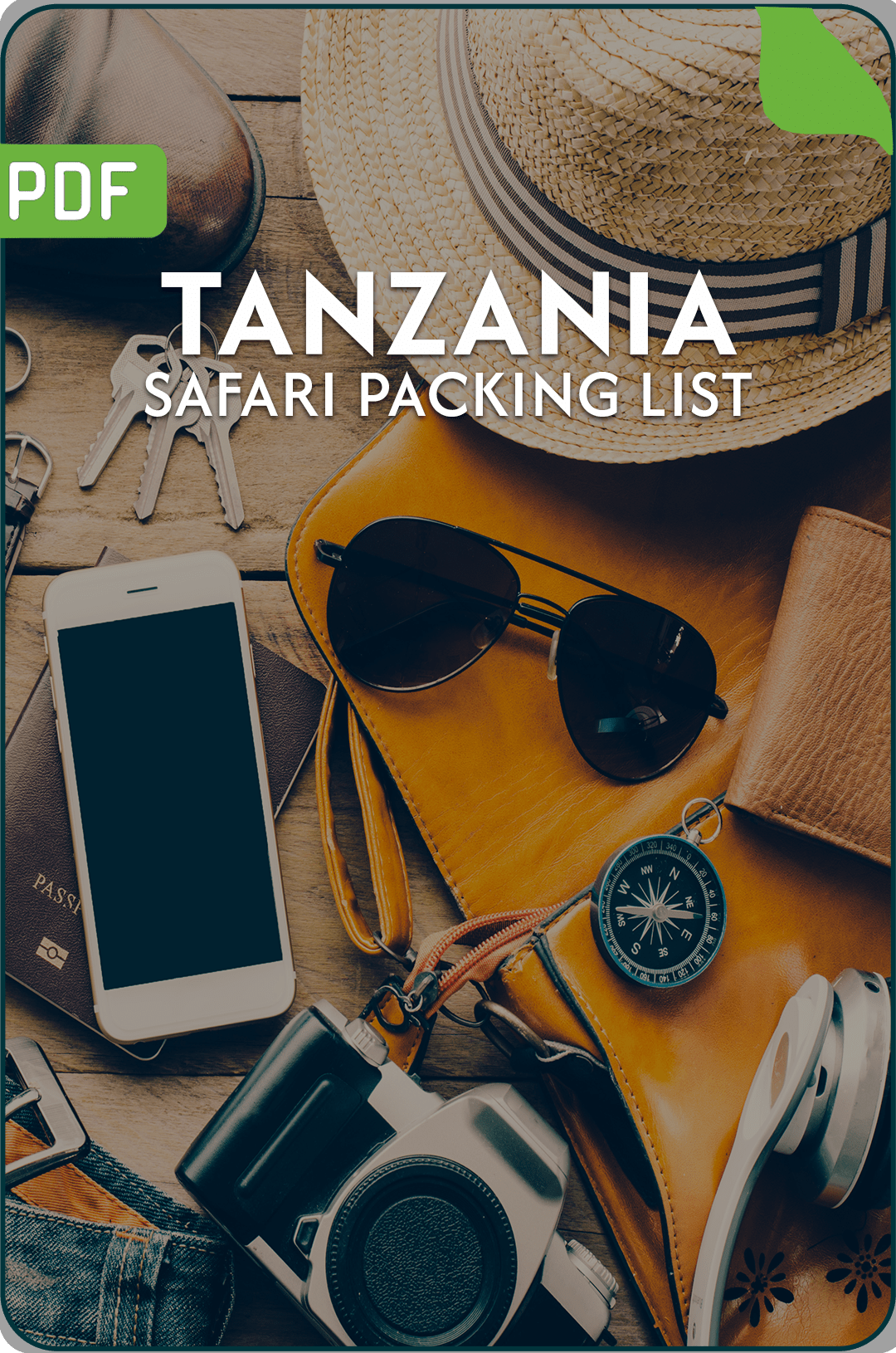
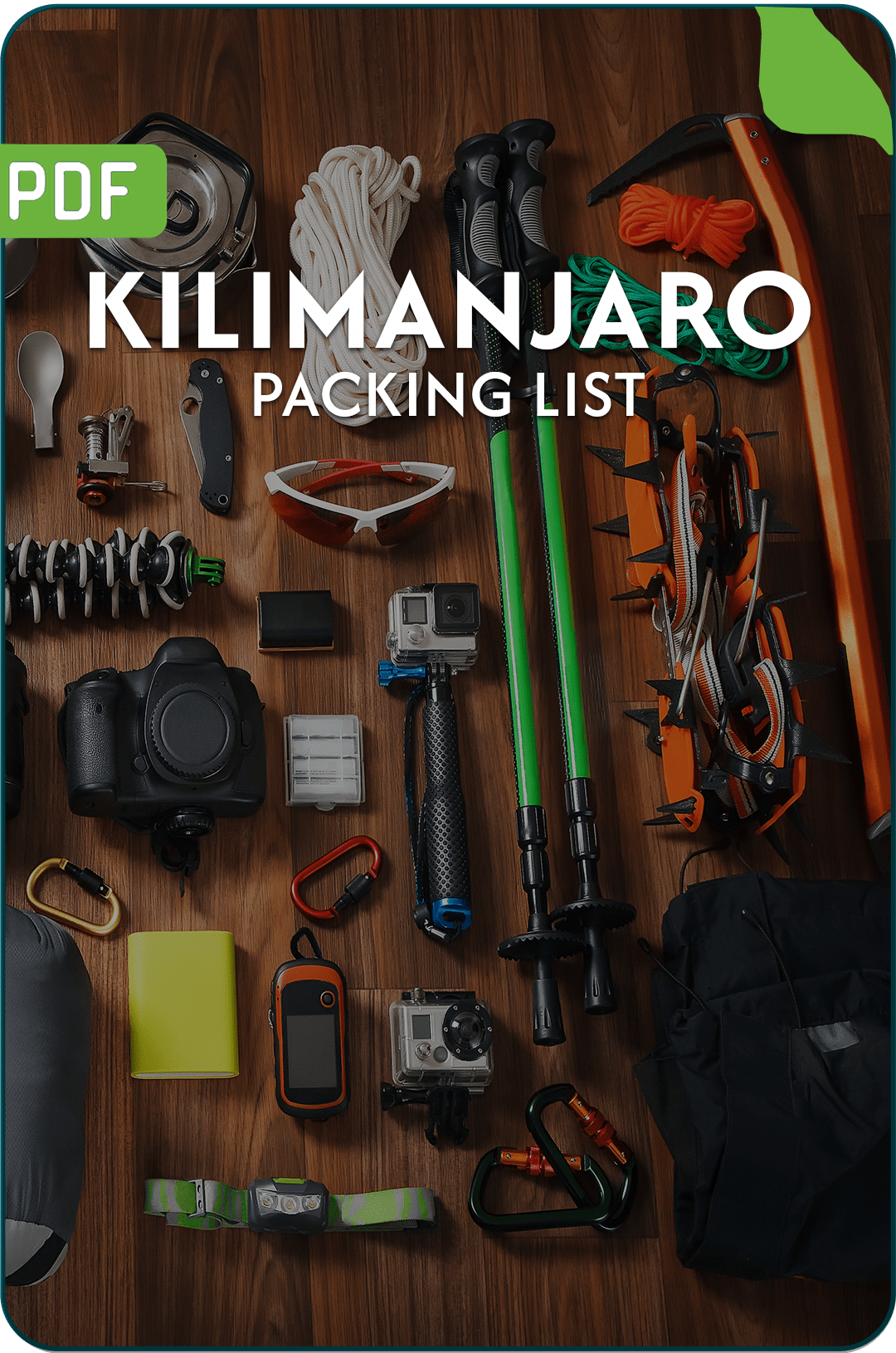
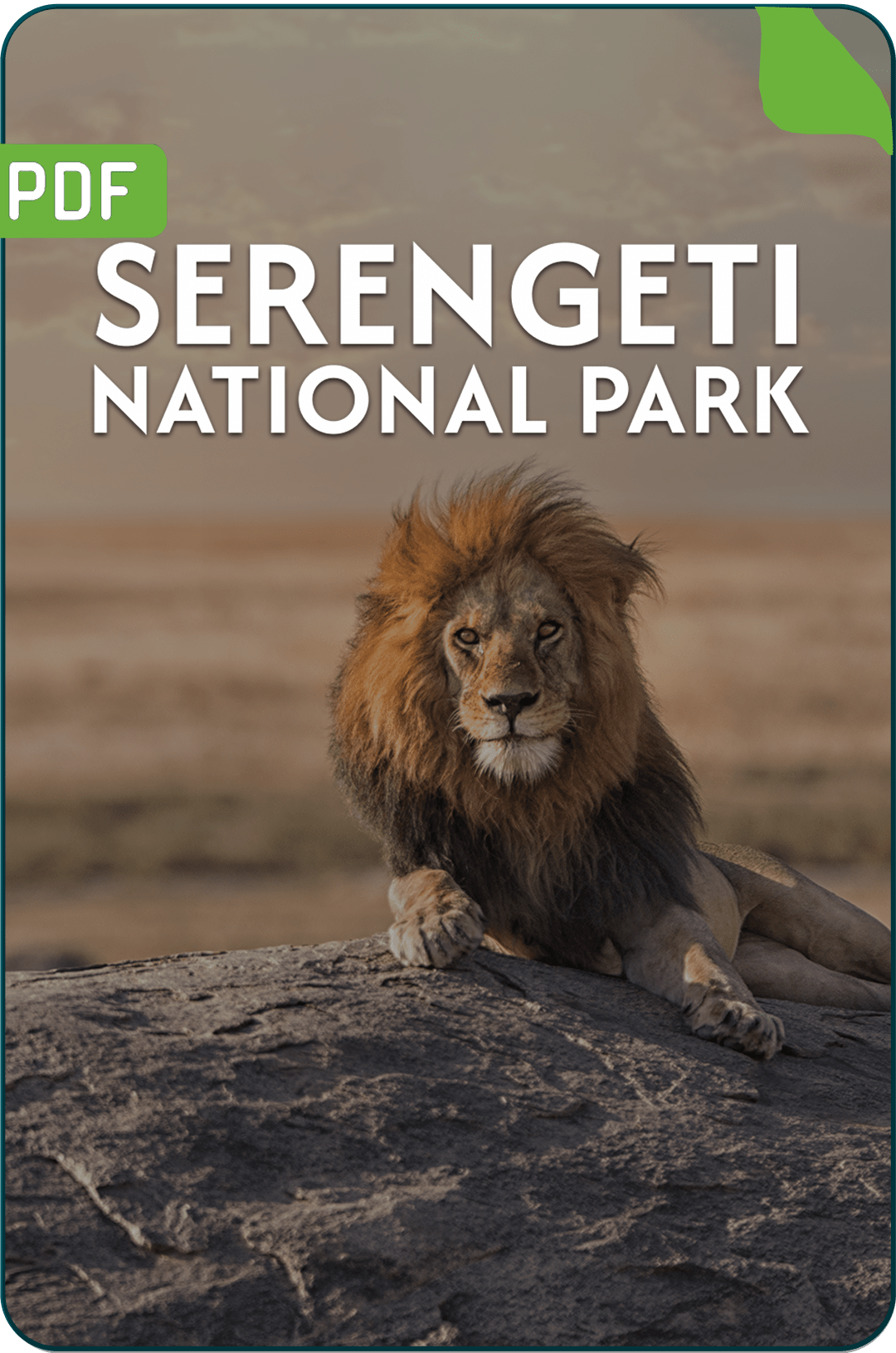
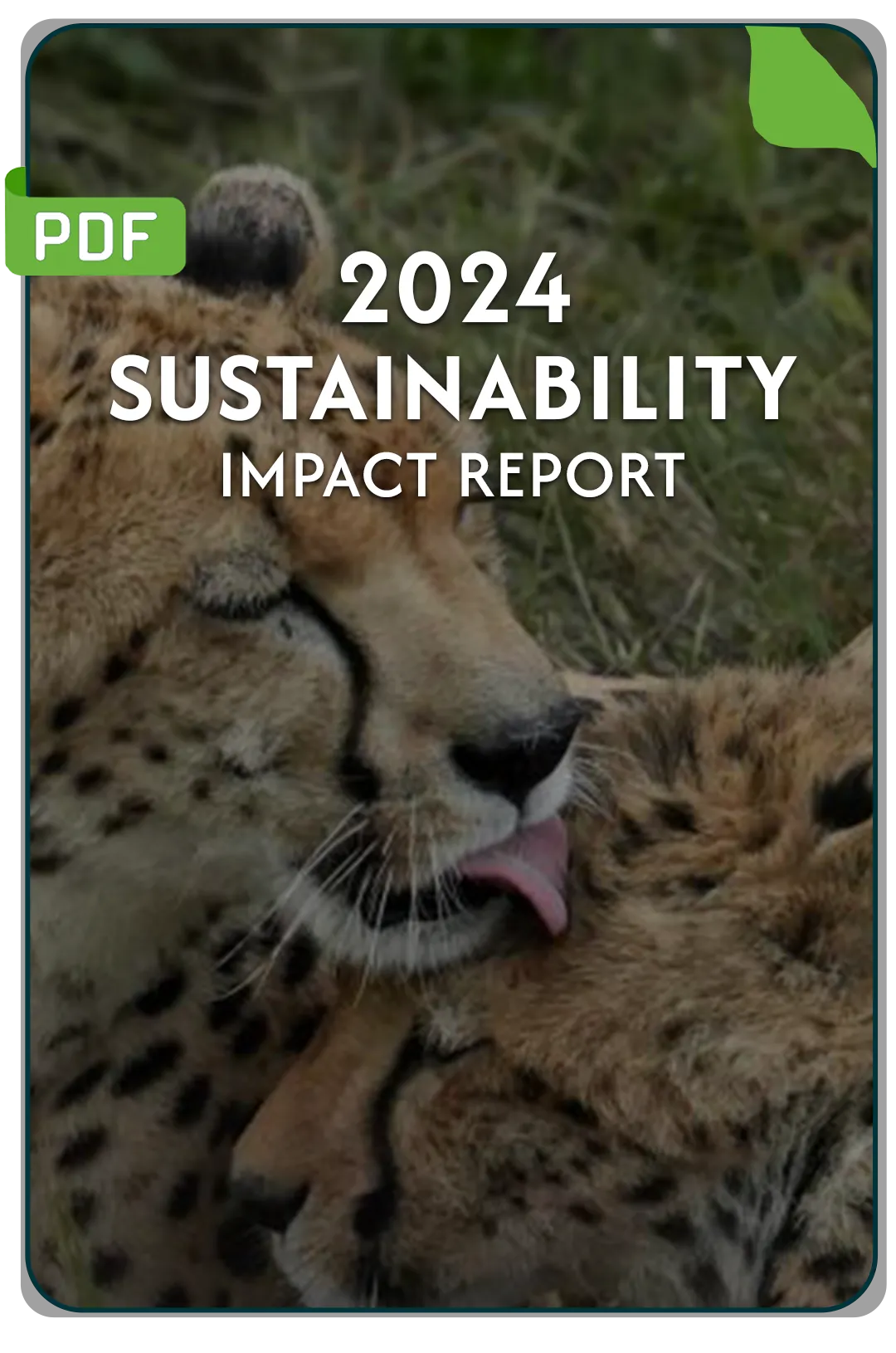
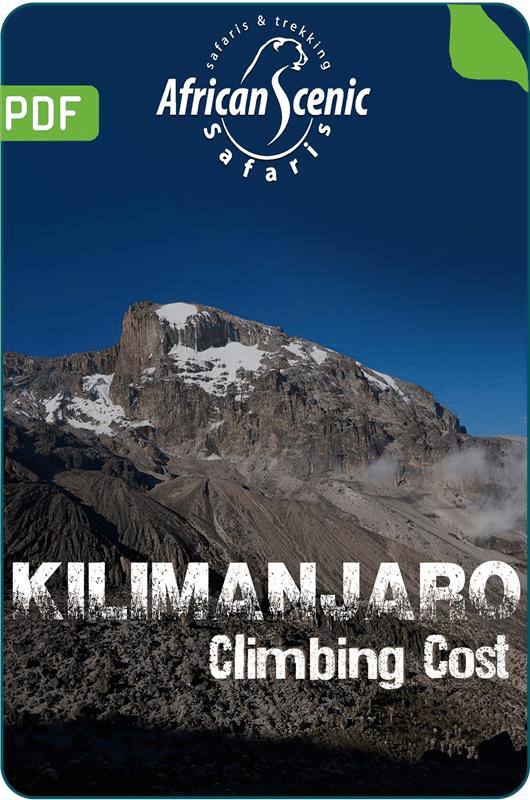





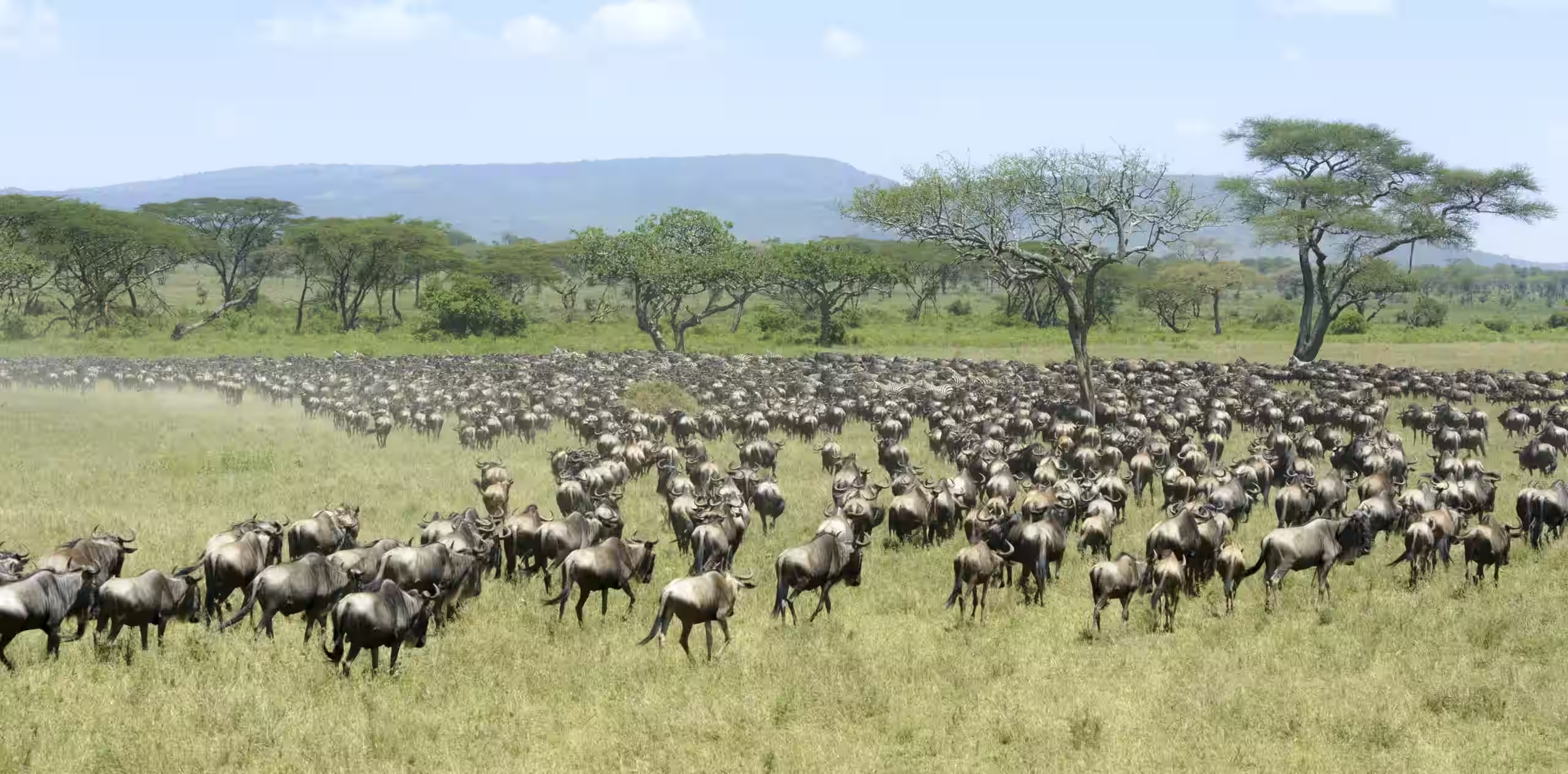
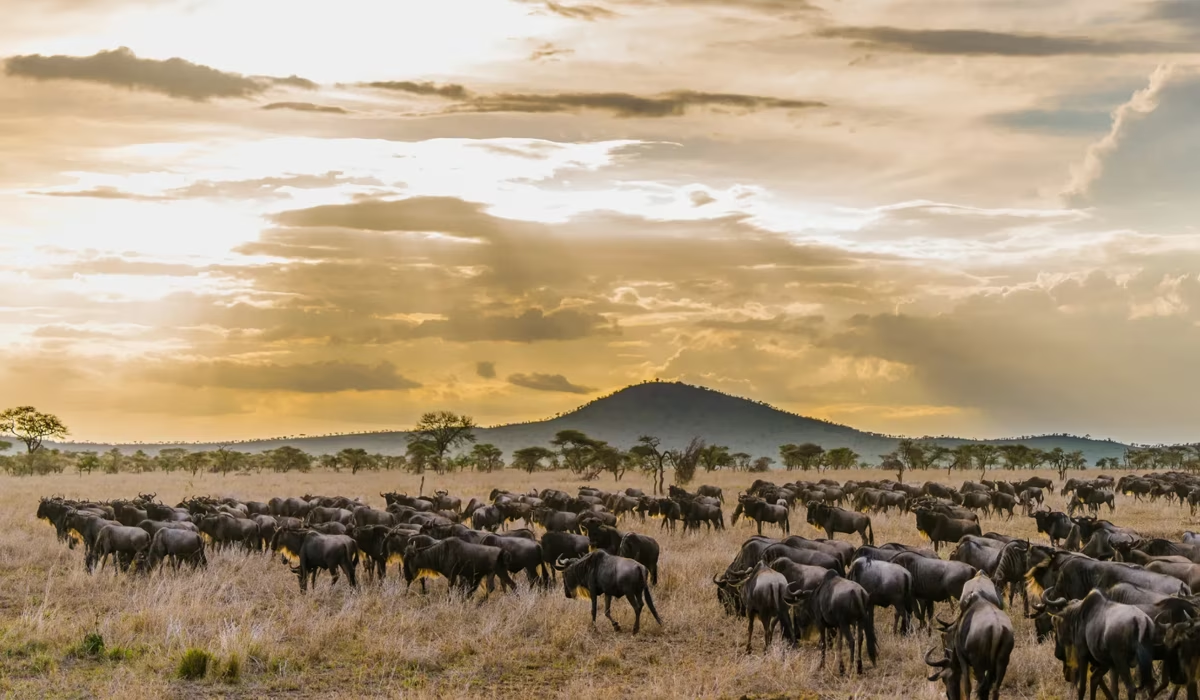


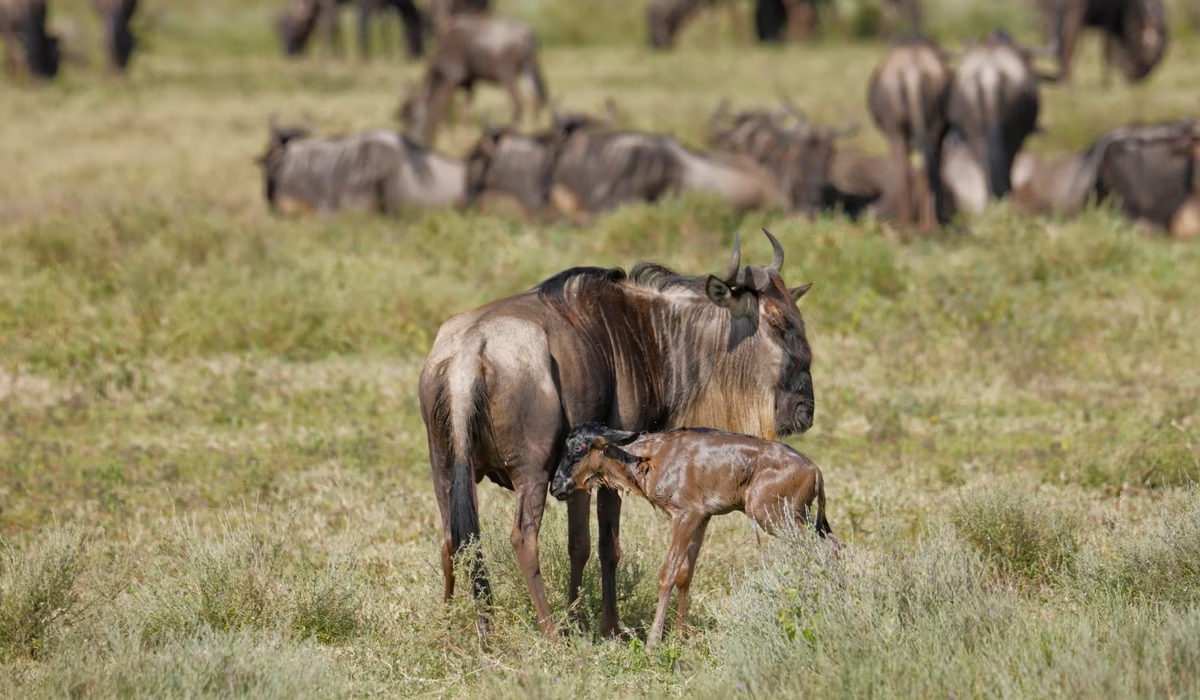
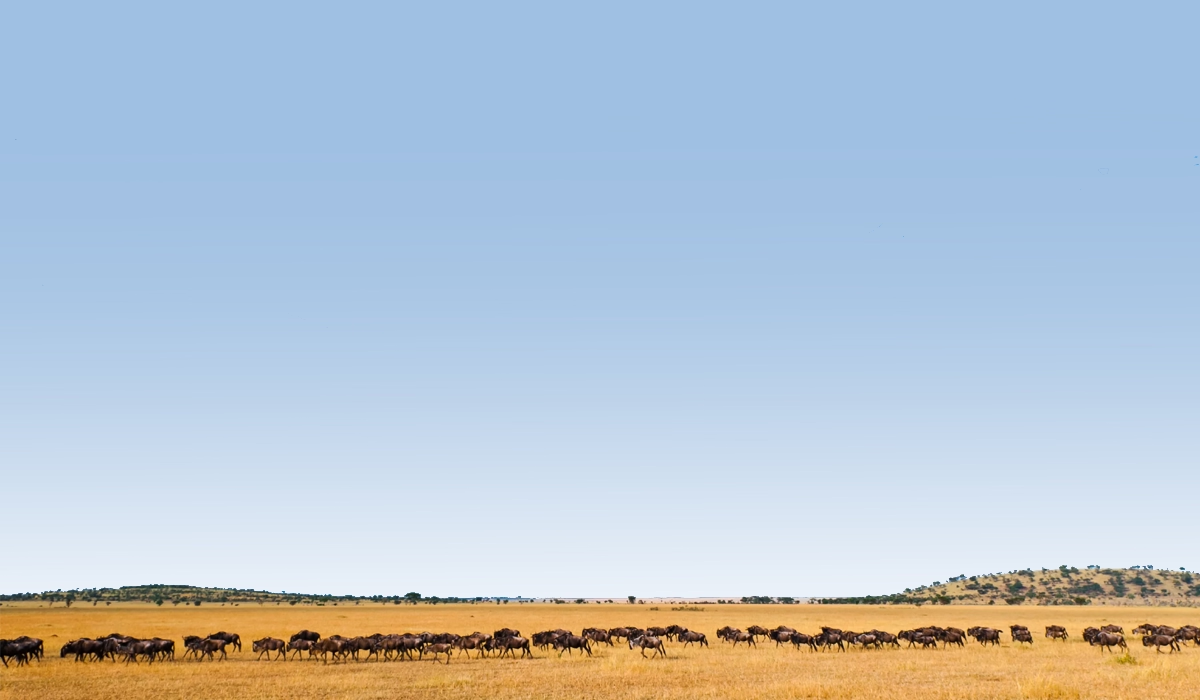
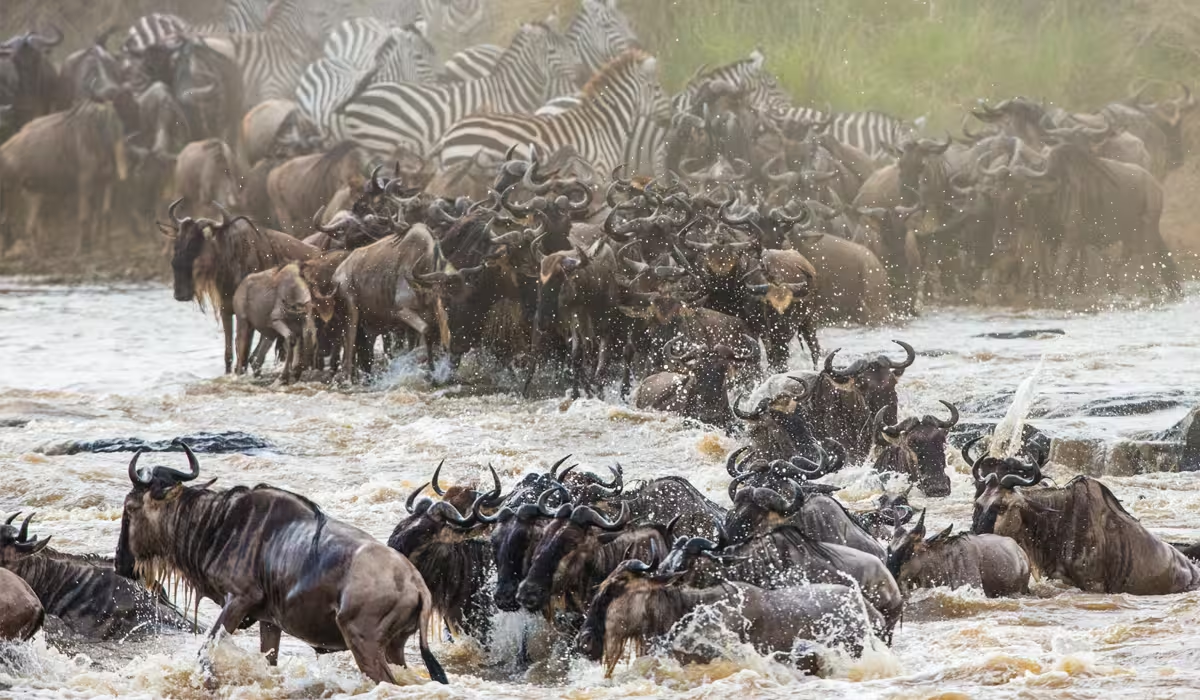
 Travel Light, Travel Right!
Travel Light, Travel Right!
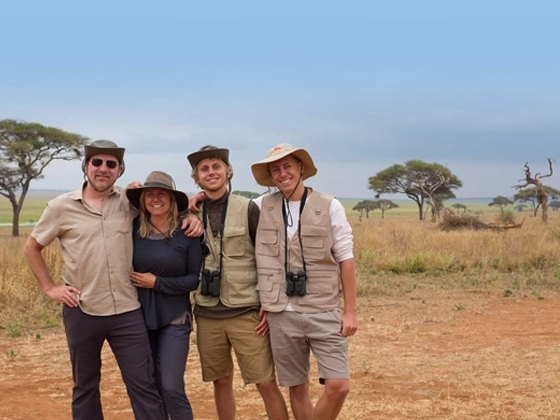


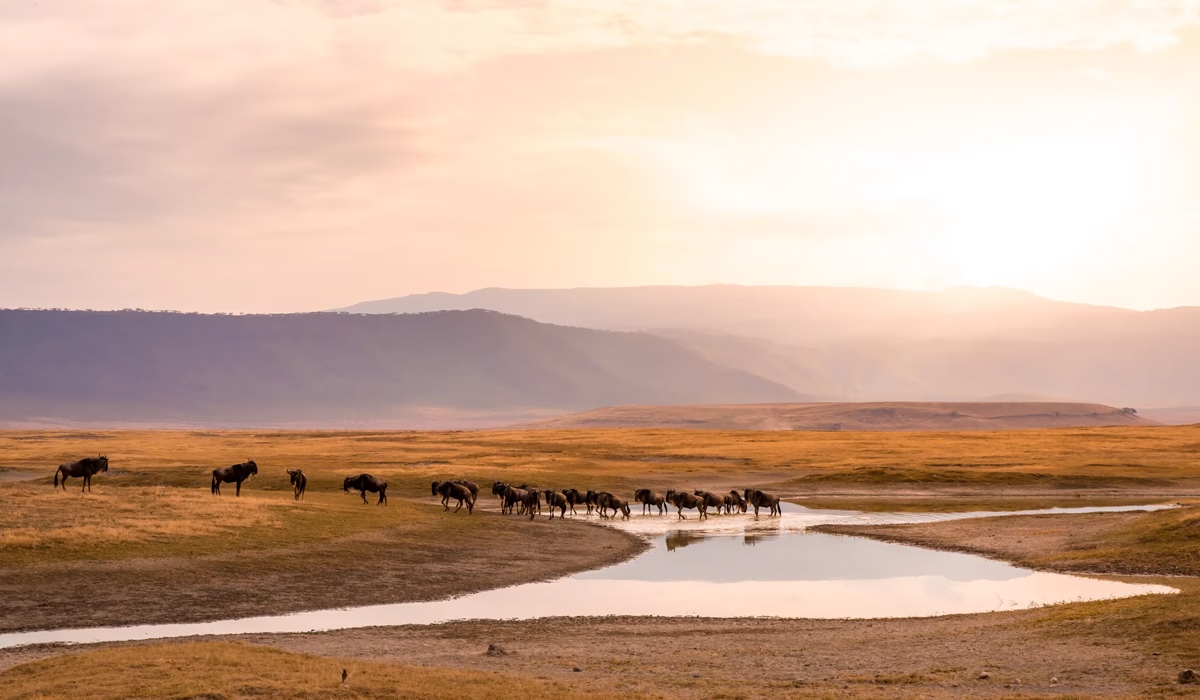
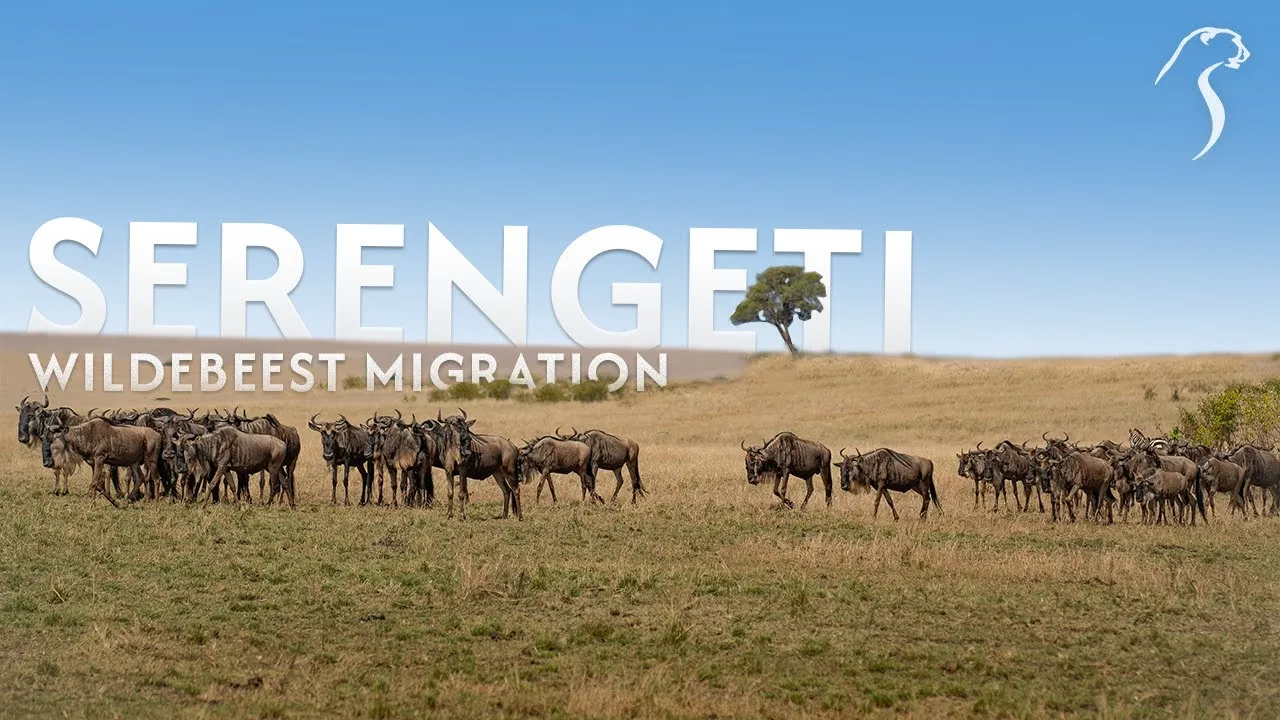



 African Scenic Safaris #1 on TripAdvisor
African Scenic Safaris #1 on TripAdvisor 




